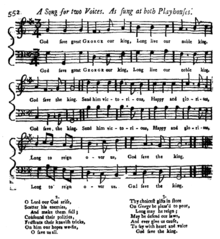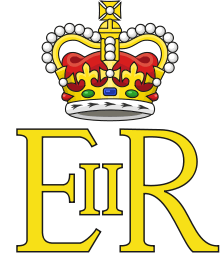National symbols of Barbados
National emblems of Barbados are the symbols that are used in Barbados to represent the independent nation. The emblems reflect different aspects of its cultural life and history.
List of symbols
| Symbol | image | Started on |
|---|---|---|
| National flag |  |
|
| Coat of arms of Barbados |  |
|
| Motto | Pride and Industry | |
| National Anthem | In Plenty and In Time of Need | |
| Royal Anthem |  God Save the Queen | |
| Queen Elizabeth II Royal Standard |  |
|
| Queen Elizabeth II Royal Cypher |  |
|
| Vice-Royal insignia |  Governor-General |
|
| Prime Minister's Standard | [1] | |
| National colours | ultramarine gold black |
|
| National dish | Cou-Cou and Flying Fish |
|
| Floral emblem | Caesalpinia pulcherrima |
|
| National Animal for Barbados | Coryphaena hippurus |
|
| National bird |  Pelecanus occidentalis |
|
| National Dress for men | Proposed | |
| National Dress for women | Proposed |
Former List of symbols
| Symbol | image | Started-Ended |
|---|---|---|
| Bridgetown City Corporation |  |
1942 |
| Province of Barbados (West Indies Federation) |
.png) |
1958 – 1966 |
| Crown colony | .png) |
1885 – 1958 |
| Vice-Royal insignia | Governor's Flag[2] |
1870 – 1966 |
| Barbados & Windward Is. | 1871 – 1885 | |
| Union Flag | 1632 – 1871 | |
Flag
The trident centred within the flag is a representation of the mythological Neptune, god of the sea. The trident in its original unbroken form was taken from the former colonial seal, which itself was replaced by the current coat of arms. Used within the national flag, the left and right shafts of the trident were then designed as 'broken' representing the nation of Barbados breaking away from its historical and constitutional ties as a former colony.
The three points of the trident represent in Barbados the three principles of democracy—"government of, for and by the people." The broken trident is set in a centred vertical band of gold representing the sands of Barbados' beaches. The gold band itself is surrounded on both sides by vertical bands of ultramarine (blue) representing the sea and sky of Barbados.
The design for the flag was created by Grantley W. Prescod and was chosen from an open competition arranged by the Barbados government. Over a thousand entries were received.[3]
Heraldry
The coat of arms depicts two animals which are supporting the shield. On the left is a "dolphin" which is symbolic of the fishing industry. On the right is a pelican which is symbolic of a small island named Pelican Island that once existed off the coast of Bridgetown. Above the shield is the helmet of Barbados with an extended arm clutching two sugar-cane stalks. The "cross" formation made by the cane stalks represents the saltire cross upon which Saint Andrew was crucified. On the base of the Coat of Arms reads "Pride and Industry".
Golden Shield
The Golden Shield in the coat of arms carries two "Pride of Barbados" flowers (Caesalpinia pulcherrima) and the "bearded" fig tree, which was common on the island at the time of its settlement by the British and may have contributed to Barbados being so named.
Flower
The national flower is the Pride of Barbados or Caesalpinia pulcherrima (L.) Sw., which grows across the island.
National heroes
On April 1998, the Order of National Heroes Act was passed by the Parliament of Barbados. According to the government, the act established that 28 April (the centenary of the birth of Sir Grantley Adams) would be celebrated as National Heroes' Day. The act also declared that there are ten national heroes of Barbados, all of whom would be elevated to the title of "The Right Excellent".[4]
The ten official National Heroes of Barbados are:
- Bussa (−1816)
- Sarah Ann Gill (1795–1866)
- Samuel Jackman Prescod (1806–1871)
- Dr. Charles Duncan O’Neal (1879–1936)
- Clement Osbourne Payne (1904–1941)
- Sir Grantley Herbert Adams (1898–1971)
- Rt. Hon. Errol Walton Barrow (1920–1987)
- Sir Hugh Worrell Springer (1913–1994)
- Sir Garfield St. Aubyn Sobers (1936–)
- Sir Frank Walcott (1916–1999)
See also
References
- ↑ Prime Minister's Flag, Flags of the World online
- ↑ Governor's Flag
- ↑ "Government of Barbados National Flag". Barbados.gov.bb. 12 November 2003. Retrieved 4 July 2010.
- ↑ Government of Barbados – National HeroesHistory of Barbados, The Parliament of Barbados
External links
- List of colonial symbols, FOTW
- List of medals awarded by the Government, Medals of the World
- Great seals of Barbados, Hubert de Vries
- Great Seals of William + Mary and George III, History box